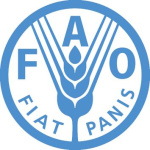- Industri: Agriculture
- Number of terms: 87409
- Number of blossaries: 0
- Company Profile:
Established in October 1945 with the objective of eliminating hunger and improving nutrition and standards of living by increasing agricultural productivity, FAO coordinates the efforts of governments and technical agencies in programs for developing agriculture, forestry, fisheries, and land and ...
A bacterial episome (e.g., the F plasmid in <i>E. coli</i>) that enables the cell to be a donor of genetic material. The sex factor may be propagated in the cytoplasm, or it may be integrated into the bacterial chromosome.
Industry:Biotechnology
A bacterial episome that confers the ability to function as a genetic donor in conjugation; the fertility factor in bacteria.
Industry:Biotechnology
A bacterial protein that, following release into the intestine, causes cramps, diarrhoea and nausea.
Industry:Biotechnology
A bacterium that causes crown gall disease in some plants. The bacterium infects a wound, and injects a short stretch of DNA into some of the cells around the wound. The DNA comes from a large plasmid - the Ti (tumour induction) plasmid - a short region of which (called T-DNA, = transferred DNA) is transferred to the plant cell, where it causes the cell to grow into a tumour-like structure. The T-DNA contains genes which <i>inter alia</i> allows the infected plant cells to make two unusual compounds, nopaline and octopine, that are characteristic of transformed cells. The cells form a gall, which hosts the bacterium. This DNA-transfer mechanism is exploited in the genetic engineering of plants. The Ti plasmid is modified so that a foreign gene is transferred into the plant cell along with or instead of the nopaline synthesis genes. When the bacterium is cultured with isolated plant cells or with wounded plant tissues, the "new" gene is injected into the cells and ends up integrated into the chromosomes of the plant.
Industry:Biotechnology
A bacterium that kills insects; a major component of the microbial pesticide industry.
Industry:Biotechnology
A bacterium, plant or animal from which DNA is purified and used in a cloning experiment.
Industry:Biotechnology
A base (purine or pyrimidine) that is covalently linked to a 5-carbon (pentose) sugar. When the sugar is ribose, the nucleoside is a ribonucleoside; when it is deoxyribose, the nucleoside is a deoxyribonucleoside. Adenine, guanine and cytosine occur in both DNA and RNA; thymine occurs in DNA; and uracil in RNA. They are the building blocks of DNA and RNA.
Industry:Biotechnology
A basic organizational unit of eukaryotic chromosomes, consisting of DNA and associated proteins assembled into strands of 30 nm average diameter.
Industry:Biotechnology
